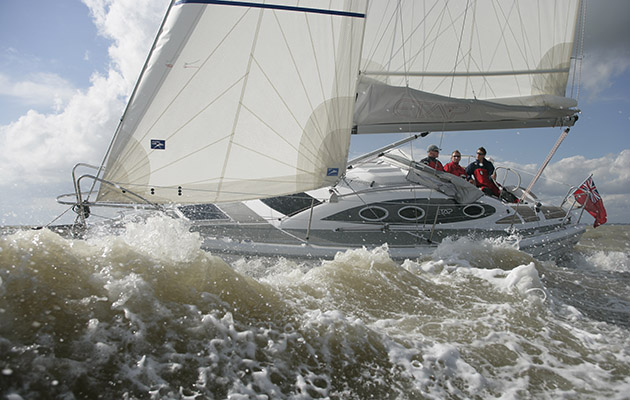Jonty Pearce finds that a new sprayhood and cockpit tent on Aurial makes all the difference, giving him a warmer room with a view and the desire to undertake some winter sailing
Aurial has finally been treated to a new sprayhood and cockpit tent just in time for winter.
When she came into our custodianship in 2008 the sprayhood had not been one of her better points; already old and stained, a year spent in the harsh Mediterranean sun had caused UV damage to the stitching. Quite frankly, it was coming apart at the seams. But the windows were clear and the canvas in sound condition, and I had no money left.
We decided to rejuvenate it with new stitching and a thoroughly good clean. Or, to be more accurate, I did; the Indoor Dragon did not want stiff old canvas anywhere near her delicate sewing machine. This was to be a blue job, not a pink job.
The fact that I had never used a sewing machine before did not particularly deter me, and the lack of a suitably heavy-duty model was soon solved by a nice man on the internet; just over £100 passed hands and I was the owner of a nice new Toyota (!) machine, some denim needles, and a reel of UV proof thick beige thread.
After puzzling over how to put the thread, needles, and sewing machine together I practiced on a patch of scrap canvas, and fairly soon got the thread tension right and worked out how to machine sew.
I fed a corner of the sprayhood’s stiff, multilayer canvas into the jaws of the machine and started. It went surprisingly well, but I learnt that there are an awful lot of seams in a sprayhood.
I over-sewed each and every one of them, as well as going round the windows and over the reinforcing webbing. Full credit to the Toyota; it pushed that large needle through five layers of canvas with hardly a complaint. It managed the webbing, too; a tough machine, and rather stronger than the needles. The result would have shamed an upholstery apprentice, but it was now solid and all in one piece.
I got to work on the canvas with mould removers, cleansers, sundry chemicals and a stiff brush, and gradually the original beige colour emerged.
A good application of Fabsil sealant, and I finally had a sound and waterproof sprayhood. I had thought it would only last a year before we needed to replace it; in fact a decade has passed.
But as time wreaked its mayhem, the canvas began to give way at the stress points and the windows hardened and split. The seams were sound though… It was time for a new one.
Continues below…
Jonty Pearce: A Vision of Clarity – ISO 11591
Jonty Pearce reflects on Mel Bartlett's article on the Recreational Craft Directive in the November 2018 edition of Yachting Monthly…
Jonty Pearce: Of shoes and ships and bulging batteries
Dimming lights point Jonty Pearce towards battery problems
I was ashamed to have such a mouldy, torn, and opaque-windowed piece of canvas rag atop my cabin, and, one icy March morning, I surprised myself by asking Mark the upholsterer to visit for an estimate.
We’ve enjoyed the benefits of the excellent Habitent cockpit tent when we’ve been at anchor for any length of time, but the time taken to rig and strike it have deterred us from using it to the extent it deserved.
I’ve envied the series of cockpit tents that friends Norry and Hutch have commissioned from Mark, so included our own specification for a bespoke cockpit enclosure when Mark came to measure up for the sprayhood. The result is a revelation.
Zipping quickly onto the trailing end of the sprayhood and tensioned against the mizzen mast, it gives me standing room in the cockpit and provides a sheltered, warm, weatherproof room with a view. Side windows zip out for access or fresh air, and a pair of roll-up windows either side of the mizzen mast give access to the rear deck.
The new sprayhood is taut (the old one was a bit ‘Norah Batty’), and the windows sparklingly clear.
We would need to fold the cockpit tent away to sail, but erection and dismantling is a fast and easy job; the stainless-steel supporting frame dismantles into three short sections and the canvas is easily stored.
It makes the whole boat more spacious, warm, and cosy, and I find myself turning the Eberspacher heater right down. It makes the temptation of winter season sailing much more attractive, as well as functioning as a sunroom for our ‘floating caravan’ weekend maintenance visits.
Why didn’t I do it before?






